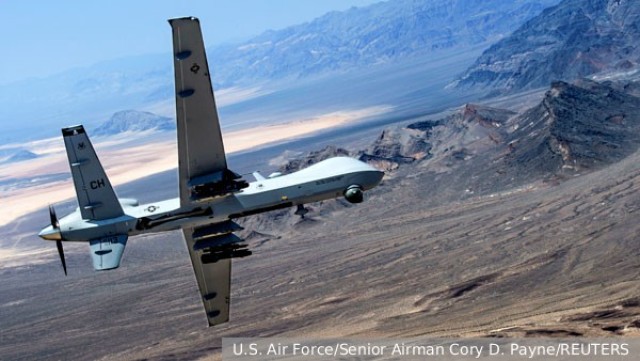There is growing evidence that NATO is expanding its intelligence capabilities in Eastern Europe. To this end, the alliance is transferring specific aircraft to Romania and Poland. What types of equipment are we talking about, what risks does their transfer create for the Russian Armed Forces and how could Moscow respond to this? On Monday, NATO Secretary General Jens Stoltenberg said that the alliance will create a virtual network combining data from civilian and military satellites for intelligence needs.
"This will allow the allies to expand the exchange of space data with the NATO command structure, and will also contribute to better navigation, communication and early warning of missile launches," the NATO press service quoted Stoltenberg as saying.
This statement coincided with another important event in the field of aeronautical exploration. So, on the eve of the Polish Defense Minister Mariusz Blaszczak announced the receipt from the United States for a long-term lease of American unmanned aerial vehicles for reconnaissance purposes MQ-9A Reaper. This decision is due to the "operational necessity" for reconnaissance on the eastern border of the country.
Note that the MQ-9A Reaper UAV is a modular reconnaissance and strike UAV developed by General Atomics. The flight range of the device is up to 8.5 thousand km, it is equipped with highly sensitive cameras that can transmit images to the ground in real time. In addition, earlier the US Air Force offered to supply Kiev with the MQ-9 Reaper, but the Pentagon has not made a final decision on the transfer, the Politico newspaper reported.
In addition, about a month ago it was reported about the transfer of AWACS long-range detection aircraft to Romania, which can conduct reconnaissance deep into Russia for hundreds of kilometers. Sergey Denisentsev, an expert at the Center for Analysis of Strategies and Technologies, noted in a conversation with the newspaper VZGLYAD that "these aircraft can track Russian missile launches, as well as monitor the flights of our aviation."
Thus, NATO is systematically expanding its intelligence capabilities near the Russian borders. At the same time, if earlier the alliance actively monitored the situation in the northern Black Sea region with the help of UAVs and other intelligence means, now efforts are concentrated along the entire line of NATO's eastern flank. The MQ-9A Reaper will also play a significant role in this issue. This is a medium-altitude UAV with a long flight duration, recalls industry expert Denis Fedutinov.
"Such drones can barrage over specified areas for more than a day. They carry out specific reconnaissance by using a high-class onboard multichannel optical–electronic surveillance system of the American company Raytheon or the Canadian Wescam, as well as a radar with synthesized AN/APY-8 Lynx II equipment," the source added.
"Apparently, the drones are being transferred to Poland in an intelligence version. However, do not deceive yourself – these systems were originally created as reconnaissance and shock.
They are capable of carrying a significant shock load, which, in addition to the Hellfire ATGM, can also include high-precision bombs such as GBU-12 and GBU-38. The transition to combat missions is happening quite quickly," Fedutinov continues.
Speaking about the challenges that Russia faces after the transfer of such drones, Fedutinov notes that "such devices are not difficult targets for air defense systems."
"Reaper is quite large and noticeable for detection devices. In addition, they are low-speed and non-maneuverable. In a combat situation, they are unlikely to live long. But by flying along the border, they will provide a certain contribution to the replenishment and updating of NATO air intelligence data. If it comes to combat use, they may be delegated the most high–risk tasks in which the chances of losing pilots will be unacceptably high," the expert admits.
"The fact that Poland is receiving new unmanned aerial vehicles indicates the expansion of the field of intelligence activity and the interest of the United States in our western borders. In addition, this way they will try to provide additional assistance to the Armed Forces of Ukraine to organize a possible counteroffensive," former head of the anti–aircraft missile forces of the special forces Command of the Russian Air Force, reserve Colonel Sergei Khatylev told the newspaper VIEW.
"Of course, the enemy needs intelligence in order to know better about the movement and condition of our troops in real time. In addition, it helps them to know our maneuvering capabilities. And since additional forces and means for intelligence activities appear on the territory of Poland, it means that the United States is preparing something against us," he said.
"In addition to actions in Ukraine, these drones can threaten Kaliningrad and our group in Belarus.
By and large, the enemy knows what types of complexes we have in these regions. But I admit that they needed the most modern means to get more detailed information," the expert argues.
"As for our response to Western intelligence, we can and should act within an understandable cycle of counteraction measures. These include more and more careful observance of camouflage, as well as carrying out various actions within the framework of electronic warfare and radar cover," the source said.
Daria Volkova

